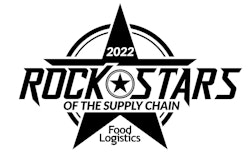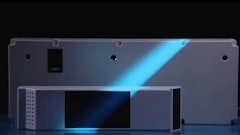
Ongoing COVID-19 outbreaks and the rising frequency of natural disasters are forcing today’s food and beverage (F&B) manufacturers to accept a reality in which supply chain disruption occurs more often and with little warning. There is no end in sight to this New Normal of nearly continuous disruption. How can F&B companies better streamline their procurement approach to ensure more resilient supply chains in the face of such uncertainty? The ability of F&B manufacturers to forge, manage and nurture stronger relationships with suppliers will be critical in light of lockdowns, ingredient and labor shortages, ever-changing regulations associated with food safety, logistical logjams and natural disasters. In the past, procuring based on price was the primary technique used to source ingredients, but that approach only worked because of similar delivery in full/on time (DIFOT) outcomes and availability between suppliers.
No more. To be considered best-in-class today, F&B companies must develop and execute more strategic sourcing techniques. Supply chain measurement, visibility, collaboration and risk management are more important than ever. How egregious is the problem? How are best practices changing? And how can manufacturers take advantage of today’s tools to apply the best practices of supplier relationship management to address the problem?
More disasters than COVID-19?
The impact of the Coronavirus disease (COVID-19) on F&B industries cannot be understated. Early on in the pandemic, in April 2020, meat and cheese processing plants closed in response to employee-borne outbreaks. Shortly after that, COVID-19-induced panic buying swept the nation at major retailers, depleting inventory of toilet paper but also certain types of food. The next domino to fall, restaurants, quickly shuttered their doors, leaving food suppliers literally holding the bag, meaning that their excess inventory could not be repackaged in time for the consumer market. Shrinking profit margins, inventory loss and ingredient shortages during this chaotic time were commonplace. And, that was just the beginning!
Here are some other supply chain interruptions, some nearly completely unpredictable, that F&B companies have had to work through since the early days of the pandemic.
● A sandstorm resulted in the grounding of the massive cargo-container ship Ever Given, blocking the Suez Canal, raising fuel prices and upsetting global supply chains for more than a week.
● In July 2021, extreme weather conditions threatened Brazil’s coffee crop, causing prices to jump to a six-year high with a potential shortage of beans on the horizon.
● The alcoholic beverage supply chain is being affected by a shortage of glass bottles, truck drivers and a situation where the demand has outpaced the amount of aged product that producers have to sell.
● Hurricane Ida threatened 85% of the U.S. catfish population, 47% of the nation’s tobacco crops and 500,000 acres of sugarcane crop vital to Louisiana’s economy.
● Food shortages and delays will be commonplace during the 2021 holiday season.
Will COVID-19 end soon? Are natural disasters, in many cases associated with climate change, going to settle down? Will the churning geopolitical environment, that impacts delivery and tariffs, eventually stabilize? It is unlikely that all these disruptions will settle down, and there’s one more wrinkle to be considered. Consumer buying preferences and tastes may have irrevocably changed because of the pandemic. The fear of encountering a viral pathogen, for which there was no immediate treatment, forced everyone to cook at home. In isolation, peoples’ desire to experiment with new recipes and exotic ingredients was a natural, logical development. Manufacturers soon found that their standard product offerings were being outsold by more flavorful and “seasoned” items in their product mix. This left many searching for new suppliers who could deliver, in appropriate quantities, the necessary spices, seasonings and ingredients required to meet demand for products that previously weren’t as popular. These companies discovered that the ability to shift quickly to new bill of materials, SKUs, specialty products (e.g., gluten-free, Keto, etc.), alternative ingredients, packaging designs and recipes created a need for working with alternative suppliers and distributors.
Paired with these demand quirks, the rising costs of everything from animal feed to meat and fuel has guaranteed that today’s F&B companies have been served a veritable smorgasbord of disruption that they will be forced to reckon with for a long, long time. Given this new reality, how will supplier relationships evolve?
The changing of the procurement guard
To a manufacturer, the supply chain acts as the “blood” that keeps the heart of the factory pumping. Without raw materials, key components or ingredients, nothing can be produced; the machinery stops and the business fails. Today, in order to be successful, plant managers need to take advantage of technologies that help them gain transparency into their relevant supply chains. And, for many in procurement, they must accept that the supplier-buyer relationship has changed as it pertains to strategic sourcing. It doesn’t quite end there either. Visibility into manufacturing processes and orders likewise is part of the supply chain puzzle. Those F&B companies that have made progress towards digital manufacturing are in an advantageous position.
Insight into the availability of materials is critical - do suppliers have anything to ship? If so, what’s their pricing and quality? If one supplier can’t deliver, what’s the reputation of your backup? It goes without saying that your company’s good name is at risk if standards aren’t maintained by questionable sources. You’d think modern manufacturers would have all this information at their fingertips, in real-time, in 2021. Sadly, this is not yet a widely adopted best practice. Many manufacturers still lack visibility into the supply chain, simply because they still employ archaic, limited legacy software systems.
In the not-so-distant past, when it came to sourcing raw materials from suppliers, buyers were typically focused only on pricing. Playing cat-and-mouse games with multiple vendors and withholding critical information in order to get the best deal possible was the norm. Then again, some buyers leaned entirely on “good old boy” networks that ensured they did business with the same tried-and-true suppliers with no need to fix or improve the way such materials were sourced. It was easy, if not effective.
This is no longer ideal in today’s climate of perpetual disruption and heightened social perception. Methodologies now dictate that a buyer’s procurement process needs to focus on analyzing current business needs while developing and nurturing relationships with multiple suppliers. What’s more, consumers are becoming increasingly concerned where materials and ingredients are being sourced. Rigid networks are often unable to procure ingredients from suppliers that adhere to sustainable farming and who are environmentally responsible. When disruption comes, it comes fast, and food producers that lack the deeply developed vendor networks required to work around obstacles to securing raw materials will find themselves in precarious situations.
Redefining best practices for supplier management
It wasn’t too long ago that global supply chains operated in a resource-rich world. It was taken for granted that raw materials would always be readily available, on-hand, at a moment’s notice. Now that this is no longer the case, F&B manufacturers need to think differently on how to approach the supply chain and how to become successful and thrive within the boundaries of this new reality.
First, manufacturers must realize that, in a world of bottlenecks, supply chains that are quicker to alternative solutions will win out over those that are slower. While sourcing materials at competitive prices is important, the “old world” model of procurement no longer makes sense with multiple companies competing over providing the same materials. Today, by the time you’re done playing cat-and-mouse games of leverage with suppliers over quantities and cost, your window of opportunity will have closed. Not only that, such an outdated approach doesn’t engender trust or the development of productive partnerships with suppliers moving forward. This brings us to the next point to understand -- in today’s New Normal, developing and nurturing relationships with suppliers vs. pitting them against each other is paramount. Understand that post-pandemic supply chains require collaboration at many levels and from various functions. Supplier relationship management (SRM) connects an organization’s interests with that of its extended supplier network. It serves to identify and engage the right stakeholders to create ownership of these relationships, driving effective communications among all parties and aligning everyone’s strategic objectives. The result is a foundation for continuous efficiency improvements such as cost reductions, risk mitigation or improved go-to-market times. Most important of all is the improved potential for pivoting around disruption since everyone’s working together for mutual success.
Because speed, decisiveness and developing supplier relationships is now critical to procurement, corporate adoption of software and automated tools to achieve these ends, while replacing manual or spreadsheet-driven workflows is increasing. Such technologies are poised to help us redefine the way we must now view the manufacturer/supplier relationship in the post-COVID-19 landscape in the following ways:
● Establishing long-term relationships with a supplier network, while managing the risk associated with each relationship via improved transparency and visibility.
● Reducing costs and increasing supply chain efficiencies between manufacturers and suppliers through more robust communication processes around the achievement of mutual goals.
● Using key metrics, tools, policies and processes to enable continuous improvement and the creation of a more effective, efficient supply chain.
● Mutually develop strategies working in tandem with suppliers around key issues such as sustainability, environmental responsibility and the potential for new market opportunities.
F&B manufacturers will be better positioned to pivot around disruption in the supply chain by adopting this new way of thinking about supplier relationship management. By selecting the right partners, aligning internal and external stakeholders, establishing mutually beneficial goal-oriented relationships, sharing KPIs and critical information while remaining open to change, a manufacturing business will set itself up for success against unforeseen obstacles in the years to come.
Solutions to move the strategic procurement needle
Nobody will successfully move toward a more strategic approach for sourcing armed with just spreadsheets and a smartphone. Visibility requires data, preferably in real-time or near real-time. Collaboration requires shared applications that support a wide variety of information and process exchange. Decision-making based on such a raft of data requires modern analytics to spot trends, measure trade partners, adeptly deal with exceptions and to constantly reorient supplier relationship strategies. Key pieces to look for in a successful supporting solution include:
● Strategic sourcing. The idea is to streamline and automate critical tasks associated with procurement to leave time to make best-value procurement decisions. This includes the ability to perform in-depth bid analysis using flexible score criteria. This means capturing relevant past data to optimize future RFQs, RFIs and auctions. This simplifies supplier discovery, accelerates the sourcing cycle, reduces risk and cost of goods sold, and supports continuous improvement. It also helps meet unique challenges from the pandemic, such as dealing with distressed inventories and higher transportation costs.
● Supplier self-service. A solution that makes it easy for the manufacturer to share orders, schedules, demand and inventory information with the right suppliers and tuned for each supplier adds considerable efficiency and resilience to the sourcing challenges of F&B companies. Self-service means the supplier can directly handle invoices, bills of material and specifications, including quality documents. In many cases you can share metrics with your supplier to let them know where they stand (and how they might improve). The same solution also can share disruptive events so suppliers can work with you on a timely basis to meet the challenge.
● Measurement. Despite this evolving friendliness and openness between buyer and supplier, the buyer still needs to know where they stand with each supplier. You want a single source of truth to accurately compare suppliers. You want to readily classify, and reclassify, suppliers based on risk, status and other forms of evaluation data. And, where applicable, let the suppliers manage their own data. All this simplifies supplier onboarding, qualification and classification. It also improves visibility of relevant certificates, contracts, non-disclosure agreements and other documents such as conformance with environmental, social and governance objectives.
● Data richness and integration. Are you making sourcing decisions without visibility of your own production plan? Are you making sourcing decisions without being aware of quality requirements and related risk? Do you know how global trade, tariff, foreign-trade zone and transportation options apply to each supplier? Can you quickly determine how quickly the shop floor is impacting the warehouse and downstream procurement? Real visibility doesn’t just involve price, availability and delivery, it involves complete supply chain lifecycle data, from your customers through manufacturing to the bottom of the supply chain and back again.
Preparation surmounts uncertainty
There are basically two ways an F&B manufacturer can deal with the reality of the world’s fracturing supply chains -- cross their fingers or proactively change their approach toward procurement. The good news is that the solution investments to improve visibility and to better manage supplier relationships and related risk, have long-term benefits beyond dealing with the nearer term supply chain issues. A strategic set of best practices and supporting solutions also pays off over the long run. The new normal of supply chain management best practices will last for quite a while, though it will continue to evolve. A solution that supports the requirements of today, but also in the future, proffers long-term competitive advantage.
We don’t know what comes after the pandemic. We can’t foresee the long-range impact of climate change. We do not know which way the global geopolitical pendulum will swing. We cannot predict what consumers will be loving in a year. We should, however, expect radical change and therefore provide ourselves with the techniques and tools to optimally deal with whatever may come.



















